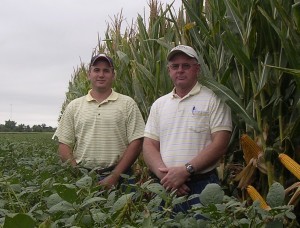Loyd Jordan is a 3rd generation farmer who cultivates 3,500 acres southwest of Lubbock in Terry and Lynn counties, Texas. He irrigates 1,250 acres with pivots and, most recently, 300 acres with subsurface drip irrigation. A neighbor had tried drip and said good things about water savings, getting increased yields on fewer acres, and how easy it was to apply fertilizers and control insects. So in 2004, Jordan installed 40 acres. He liked it so much that he installed an additional 120 acres in 2007, and then another 140 acres in 2009. Now he prefers drip to the pivots he has used for so many years.

 Last week, we blogged about a free webinar produced by the Grange Network called “
Last week, we blogged about a free webinar produced by the Grange Network called “